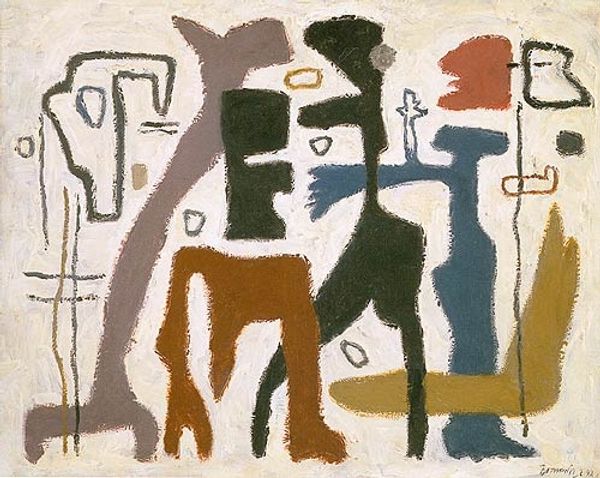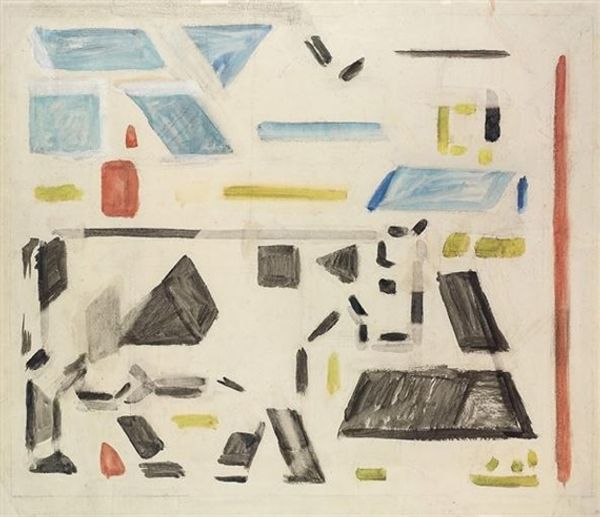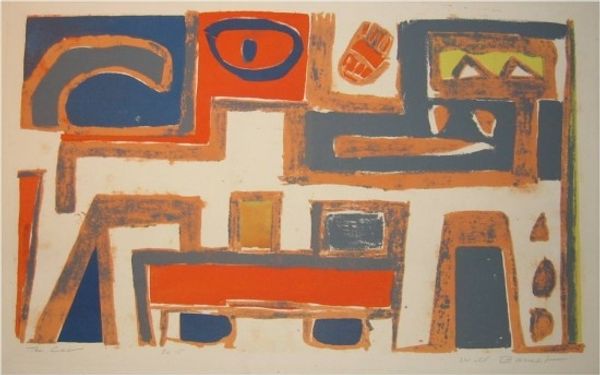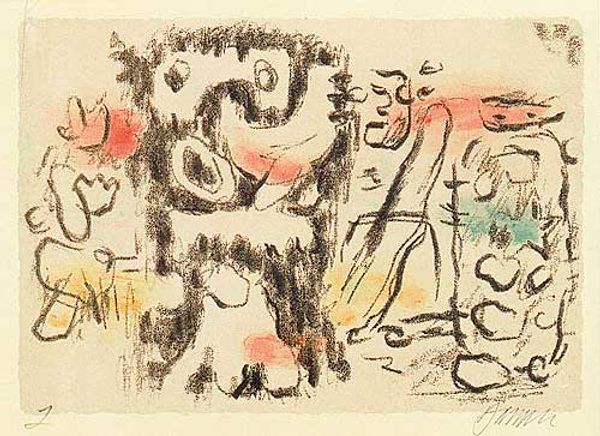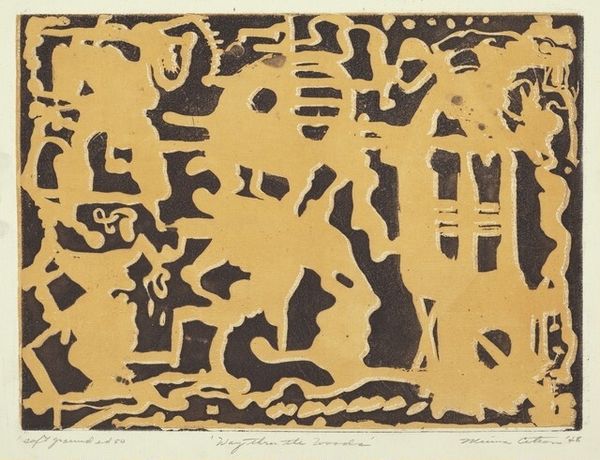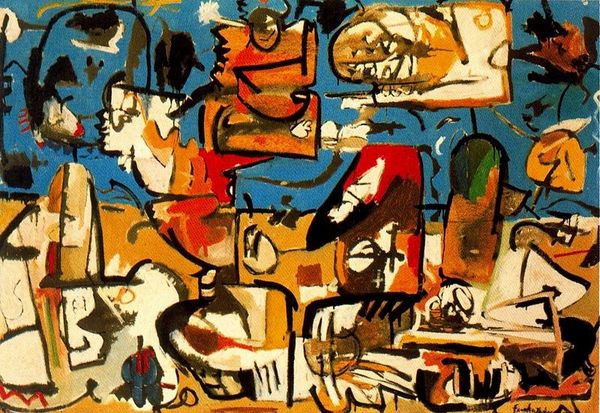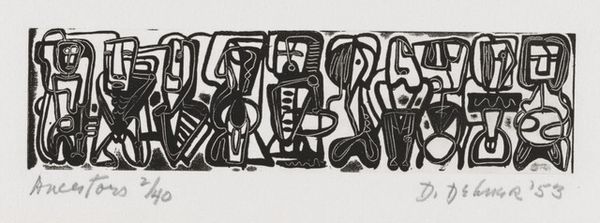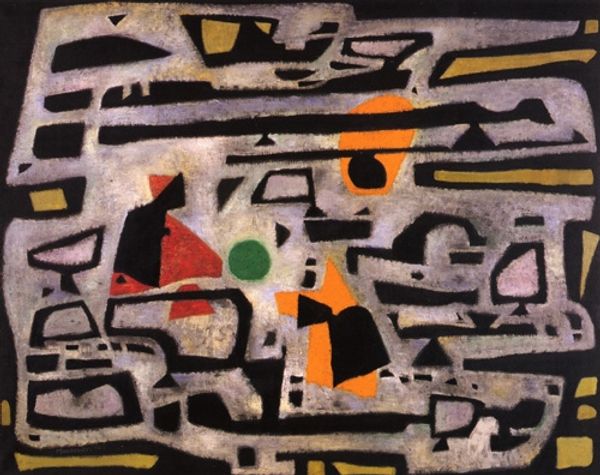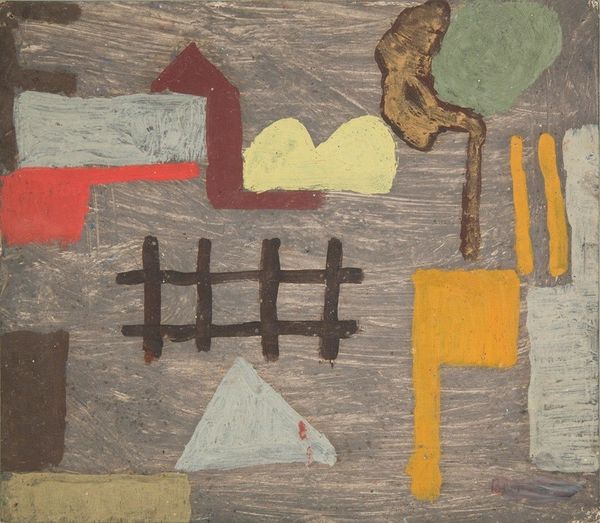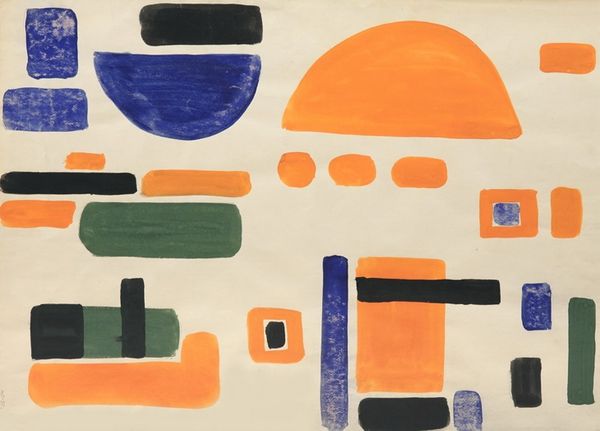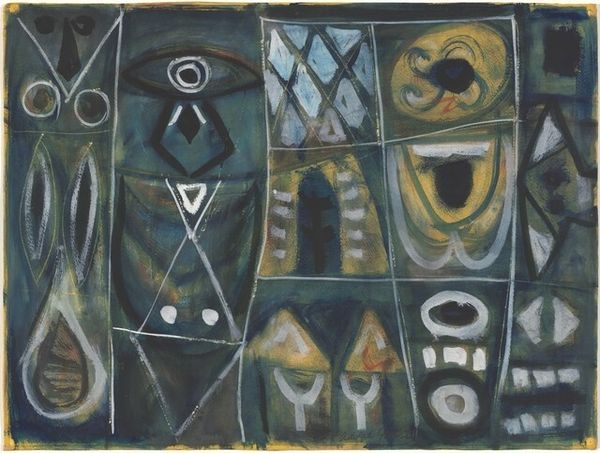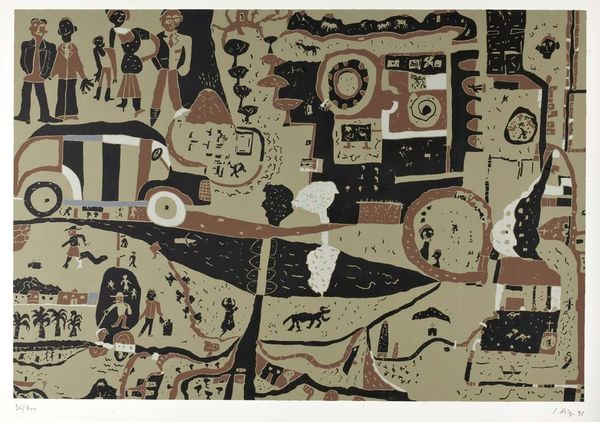
painting, oil-paint
#
abstract-expressionism
#
painting
#
oil-paint
#
form
#
geometric
#
abstraction
#
modernism
Copyright: Willi Baumeister,Fair Use
Curator: Standing before us is Willi Baumeister’s "Owambo" created in 1948 using oil paint. Editor: There's something both ancient and futuristic about this piece, a sense of cryptic symbols and fragmented narratives laid bare. I am drawn to how the arrangement implies the influence of Bauhaus design, creating a dialogue with its stark aesthetic. Curator: Baumeister's work is interesting because he engages with a range of modern movements. His process combines abstraction and geometric form and, moreover, explores primal human creative urges, visible in the layering of signs that remind one of primitive forms of communications such as cave paintings. How can one evaluate and understand what messages and the cultural framework an artist creates from combining methods of the old and new? Editor: I think that approach allows Baumeister to explore a universal visual language—a vocabulary outside of time and specific cultures. This period marked his transition toward engaging themes of societal healing following trauma. By employing a simplified design that features stark angular lines combined with a minimalist colour scheme, it is perhaps easier for us to feel a sense of order and restoration in the artwork. Curator: Looking closely at the paint application reveals so much. There is this almost tactile engagement, that even through oil paint and canvas, simulates primal, manual gestures—it's as if he's pushing back against mass production, reminding us of the individual hand behind creation. Editor: The limited colour palette, combined with a range of recognizable symbols—particularly in the arrangement of totem-like forms, almost ritualistic in its symbolism—makes me question what Baumann aims for in terms of identity, purpose and a desire for a hopeful future. Curator: Absolutely. The art historical relevance is huge. Post World War Two, there was a massive challenge for abstract artists such as Baumann and others in Europe to rebuild culture in terms of new cultural expression, materials, methods and meanings. "Owambo" reflects that shift. Editor: Seeing “Owambo”, I can’t help but reflect on how art reflects historical, societal shifts. Curator: It's a strong testament to art’s enduring capability to adapt and express these difficult processes and themes.
Comments
No comments
Be the first to comment and join the conversation on the ultimate creative platform.
